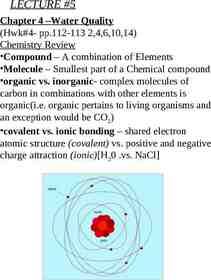From Conceptual to Executable BPMN Process Models A Step-by-Step
27 Slides5.56 MB
From Conceptual to Executable BPMN Process Models A Step-by-Step Method Marcello La Rosa & Marlon Dumas Queensland University of Technology – University of Tartu [email protected], [email protected]
What’s this tutorial about? ATAMO* Conceptual process model * “And Then A Miracle Occurs” Executable process model 2
Who’s this tutorial for? 1. BPM practitioners seeking to bridge business – IT 2. BPM instructors / teachers 3. Business process modeling and automation researchers Basic knowledge of BPMN assumed
The BPM lifecycle 4
The BPM Lifecycle (revisited) Process identification Process Process architecture architecture Conformance Conformance and performance performance insights insights Process discovery As-is As-is process model model Process monitoring and controlling Process analysis Executable Executable process process model model Process implementation Insights Insights on weaknesses weaknesses and and their their impact impact To-be To-be process process model model Process redesign 5
The well-known gap Process identification Process discovery Process monitoring and controlling Process analysis Executable Executable process process model model Process Process implementation implementation To-be To-be process process model model Process redesign 6
The result: two sides of the story Conceptual “to-be” process models are made by domain experts provide a basis for communication amongst relevant stakeholders must be understandable must be intuitive and may leave room for interpretation contain purely a relevant set of process information Executable process models are made by IT experts provide input to a process enactment system - BPMS must be machine readable must be unambiguous and should not contain any uncertainties contain further details that are only relevant to implementation “to-be executed” process model 7
Bridging the gap: one task at a time 1. 2. 3. 4. 5. Identify the automation boundaries Review manual tasks Complete the process model Adjust task granularity Specify execution properties Adapted from teaching material of Remco Dijkman, TU/e. Part I Part II 8
Our running example Customer Seller Supplier 1 Supplier 2 9
Our running example
1. Identify the automation boundaries Principle: not all processes can be automated. - Start by identifying each task’s type: 1 2 Automated tasks 3 User tasks Manual tasks 11
In BPMN: specify task markers Automated tasks User task Manual task 12
In our example automated user manual
2. Review manual tasks Principle: if it can’t be seen by the BPMS, it doesn’t exist. - Find ways to support manual tasks via IT: via user task via automated task - Isolate them and automate the rest 14
Alternative: isolate manual tasks 15
Alternative: isolate manual tasks Segment 1 Segment 2 Segment 3 16
Quiz: let’s consider this process fragment Prescription fulfillment process: Once the prescription passes the insurance check, it is assigned to a technician who collects the drugs from the shelves and puts them in a bag with the prescription stapled to it. After that, the bag is passed to the pharmacist who double-checks that the prescription has been filled correctly. After this quality check, the pharmacist seals the bag and puts it in the pick-up area. When a customer arrives to pick up their prescription, a technician retrieves the prescription and asks the customer for their payment. Assume the pharmacy system automates this process. Identify the type of each task and link manual tasks to the system.
Possible solution 18
BPMN elements irrelevant for execution Physical data objects Messages bering physical data objects Data stores (both physical and electronic) Pools & lanes Text annotations Remove or neglect, depending on BPMS 19
3. Complete the process model Principle: exceptions are the rule. - Add exception handlers It happed for real! Principle: no data no decisions, no tasks handover. - Specify all electronic business objects 20
In our example 21
In our example 22
4. Adjust task granularity Principle: BPMSs add value if they coordinate handovers of work between resources. - Aggregate any two consecutive tasks assigned to the same resource - Refine tasks that are too coarse-grained 23
Look around Candidate tasks for aggregation may not necessarily be consecutive due to a sub-optimal order of tasks in the conceptual model. 24
An exception to the rule 25
Our example Before After Step Step 41
End of Part I
































